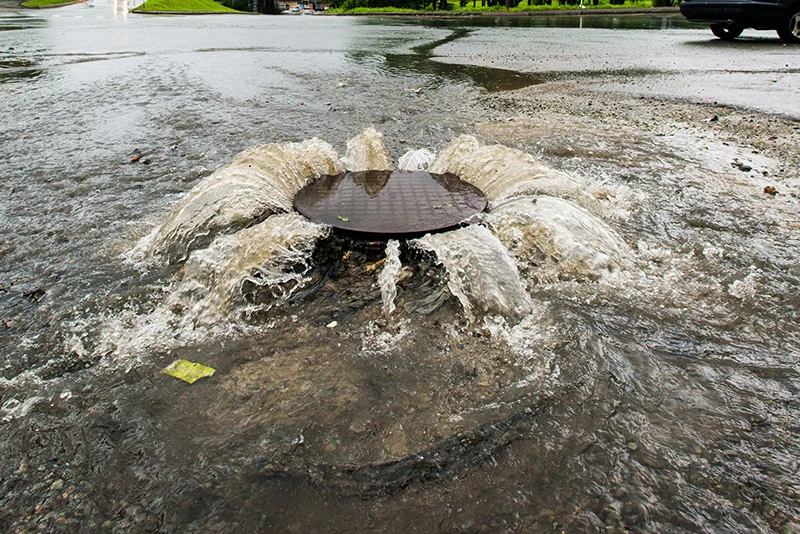
Michael Williams, P.E.
Senior Vice President - InfrastructureSanitary sewer infrastructure represents a tremendous investment for cities. Each day, communities of all sizes depend on miles of underground sewer lines to transport millions of gallons of wastewater. Because these systems are unseen, defects and deterioration often go unnoticed until a problem arises above ground. When ignored, aging sanitary sewer systems experience complications that can lead to public health hazards, cause unplanned service interruptions, and require expensive emergency repairs. One of the most common defects of a deteriorating sanitary sewer system is large amounts of infiltration and inflow (I/I). This increased groundwater and stormwater load on the network can create manhole surcharges during rain events and disrupt the wastewater treatment process.

Sanitary sewer rehabilitation extends the life of aging collection and conveyance systems using various construction techniques. Whether it is manhole rehabilitation, pipe rehabilitation, or both, these projects allow cities to preserve one of their most vital assets.
Here are four tips for successful sanitary sewer rehabilitation:
1. Conduct inspections on a cycle
Many cities implement proactive sanitary sewer system inspections on a recurring cycle. For example, the City of St. Paul, Minn. conducts inspections on its sewers every ten years. A rolling inspection schedule helps cities identify problems early before being forced to inspect and repair a failed system, which is often more costly and disruptive.
Closed-circuit television (CCTV) plays a critical role in collecting the data used for asset inspection. Remotely operated robotic cameras allow for non-destructive inspections using existing sewer system entry points.
Proactive, periodic inspections lead to early problem identification, which allows cities to plan construction projects and maintenance programs on a schedule that works in concert with other projects or events.
2. Collect, organize, and interpret data
If a city chooses to adopt a rolling sanitary sewer inspection schedule, the information gleaned from these inspections must be appropriately leveraged. A typical asset inspection seeks to document existing conditions such as structural integrity, rate of deterioration, material type, and operational issues.
Once inspection data is collected, it’s time to organize and interpret it. Asset management software that incorporates GIS mapping can be a powerful tool. Some applications utilize mobile devices in the field that allow crews to send real-time data to office staff. By tracking inspection and maintenance history, cities gain a clear and comprehensive understanding of current and projected needs.
3. Align sewer rehab project with street reconstruction if possible
A proactive, forward-thinking approach to sanitary sewer rehabilitation creates opportunities for added efficiencies during other planned projects. For example, a city may choose to prioritize a particular sewer rehab project based on the additional need for street reconstruction in the same area. While not always possible, concurrent construction typically saves time and money during both the design and construction phases.
4. Notify affected property owners
Because sewer rehabilitation work may impact some homes and businesses, cities should notify property owners in advance, particularly in the event of a planned service interruption. Additionally, some projects require work to be performed at night, so residents should know to expect noise and bright lights during late hours.
Cities should notify impacted property owners using brief, clear, and informative messaging. Some cities send postcards or letters outlining the contractor’s plan and schedule, along with simple directions for the property owner and contact information should questions arise. The city’s website and social media platforms can communicate project information to a broader public audience.
While sanitary sewer rehabilitation projects may not garner the attention or public support of other items in a capital improvement plan, smart cities prioritize preserving these systems. Innovations in trenchless construction methods, including pipe bursting, slip lining, and Cured-in-Place-Pipe (CIPP), provide cities and contractors options that save time and money compared to dig-and-lay open trench methods. Design factors such as hydraulic capacity, line location, and existing utilities determine which techniques are appropriate.

If your city needs an evaluation of its aging sanitary sewer system, Crafton Tull assists communities both large and small with rehabilitation projects. Our civil engineers, land surveyors, GIS technicians, and construction inspectors collaborate seamlessly to achieve project success.